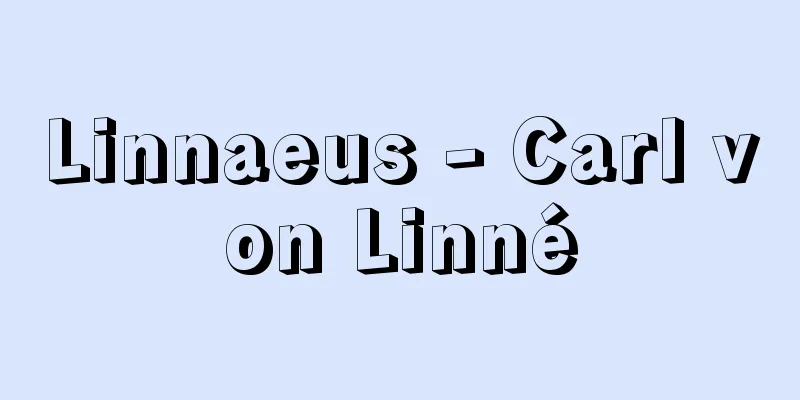Murokyuso - Murokyuso

|
A Confucian scholar in the mid-Edo period. His given name was Naokiyo, his pen name was Shirei, and he was commonly known as Shinsuke. He also went by the pen names of Hatosu and Soro. He was born on February 26, 1672 (Meireki 4) in Yanaka, Edo (Taito Ward, Tokyo) as the son of Genboku (1616-1684), a physician from Aga County, Bitchu (Jobo County, Okayama Prefecture). He was fond of books from an early age, and in 1672 (Kanbun 12) he served Maeda Tsunanori, the lord of Kaga Domain, and studied under Kinoshita Junan in Kyoto at his command. In 1686 (Jokyo 3), he was appointed to Kaga (Kanazawa City), where he bought an abandoned house as his residence, and began to use the pen name Hatosu. During this time, he deepened his studies by corresponding with Haguro Yosen (1629-1702), a disciple of Yamazaki Ansai, but it is said that he did not establish his views as a Neo-Confucian scholar until he was nearly 40 years old. In 1711 (Shotoku 1), he was recommended by his fellow disciple Arai Hakuseki to become a Confucian scholar for the shogunate, and lived in Surugadai, Edo. Even after Hakuseki's downfall, he gained the trust of Shogun Tokugawa Yoshimune, and in 1722 (Kyoho 7) he became a Jiko (court tutor), and was often consulted by him and was involved in the shogunate's administration. In 1725, he became an inner Confucian scholar in the Nishinomaru, a position he held until his death on August 12, 19th year of the Kyoho era, at the age of 77. At a time when Yangmingism, Jinsai, and Sorai philosophies were in vogue, he adhered to Neo-Confucianism and worked to popularize it, but in his later years he drew on his own heart and discussed early modern self-consciousness, the contract between emperor and his subjects, and the emperor and his subjects, showing that he could not simply be dismissed as a feudal ideologue. His many works include "Ako Gijinroku" (1703, preface), "Rikuyuengi Taii" (1722), "Sundai Zatsuwa", "Fubousho", "Mingkun Kakun" (perhaps written in 1692), and "Kyuso Bunshu" (1763). [Hiromi Takahashi July 19, 2016] "Japanese Thought Series 34: Kaibara Ekiken and Muro Kyūsu" (1970, Iwanami Shoten) [References] | | | | |Source: Shogakukan Encyclopedia Nipponica About Encyclopedia Nipponica Information | Legend |
|
江戸中期の儒者。名は直清、字(あざな)は師礼、通称新助。鳩巣、滄浪(そうろう)と号した。備中(びっちゅう)英賀(あが)郡(岡山県上房(じょうぼう)郡)出身の医師玄樸(げんぼく)(1616―1684)の子として、明暦(めいれき)4年2月26日、江戸・谷中(やなか)(東京都台東(たいとう)区)で生まれる。幼年より書籍に親しみ、1672年(寛文12)加賀藩主前田綱紀(まえだつなのり)に仕えて、その命により京都の木下順庵(きのしたじゅんあん)に就いて学んだ。1686年(貞享3)加賀(金沢市)に赴任し、廃屋を買って住居としてから、鳩巣の号を用いるようになった。この間、山崎闇斎(やまざきあんさい)門下の羽黒養潜(はぐろようせん)(1629―1702)と往来して学問を深めたが、朱子学者としての定見をもったのは40歳近くになってからという。1711年(正徳1)同門の新井白石(あらいはくせき)の推挙で幕府儒官に転じ、江戸・駿河台(するがだい)に住んで、白石失脚後も将軍徳川吉宗(とくがわよしむね)の信任を得て、1722年(享保7)侍講(じこう)となり、しばしば諮問を受け、幕政にも関与した。1725年には西丸(にしのまる)奥儒者となり、享保(きょうほう)19年8月12日に77歳で没するまで、その地位にあった。 陽明学や仁斎(じんさい)学、徂徠(そらい)学の流行時に、朱子学を墨守して普及に努めたが、晩年にはわが心をよりどころにして近世的な自我意識や、君臣、君民間の契約を論じて、単に封建的なイデオローグとしてかたづけられない可能性を示した。著書に『赤穂(あこう)義人録』(1703序)『六諭衍義(りくゆえんぎ)大意』(1722)『駿台雑話(すんだいざつわ)』『不亡鈔(しょう)』『明君家訓』(1692成立か)『鳩巣文集』(1763)など多数がある。 [高橋博巳 2016年7月19日] 『『日本思想大系34 貝原益軒・室鳩巣』(1970・岩波書店)』 [参照項目] | | | | |出典 小学館 日本大百科全書(ニッポニカ)日本大百科全書(ニッポニカ)について 情報 | 凡例 |
<<: Sławomir Mrożek (English spelling)
Recommend
Hikiyama Kyogen
This refers to kabuki performed on floats. Floats ...
Milk-weed butterfly
…An insect of the family Danaidae in the order Le...
Aiikuhan
...In 1963, the Aiiku Research Institute was esta...
Li Shizeng - Li Shizeng
Chinese scholar and politician. A senior member of...
Agharta
... This legend was introduced to Europe in the 1...
Hosai Nembutsu - Hosai Nembutsu
〘Noun〙 A type of dancing nembutsu. It was started ...
Carcass - Edaniku
This refers to the carcass after the head, tail, a...
medical engineering
...This refers to electronic devices used in the ...
Lischke
…These settlements were called taberna or forum i...
Carstens [Mine] - Carstens
…It is the highest peak in New Guinea, and is cov...
Mido Kanpakuki - Mido Kanpakuki
This is the diary of Fujiwara no Michinaga. It is...
Angara [river] - Angara
A river in eastern Siberia, Russia. It originates ...
Physis (English spelling)
A Greek word translated into Latin as natura, and ...
Gokyogoku style
It is a school of calligraphy. Its founder was Fu...
Beadle, GW (English spelling) BeadleGW
…However, as early as 1908, AEGarrod suggested th...









